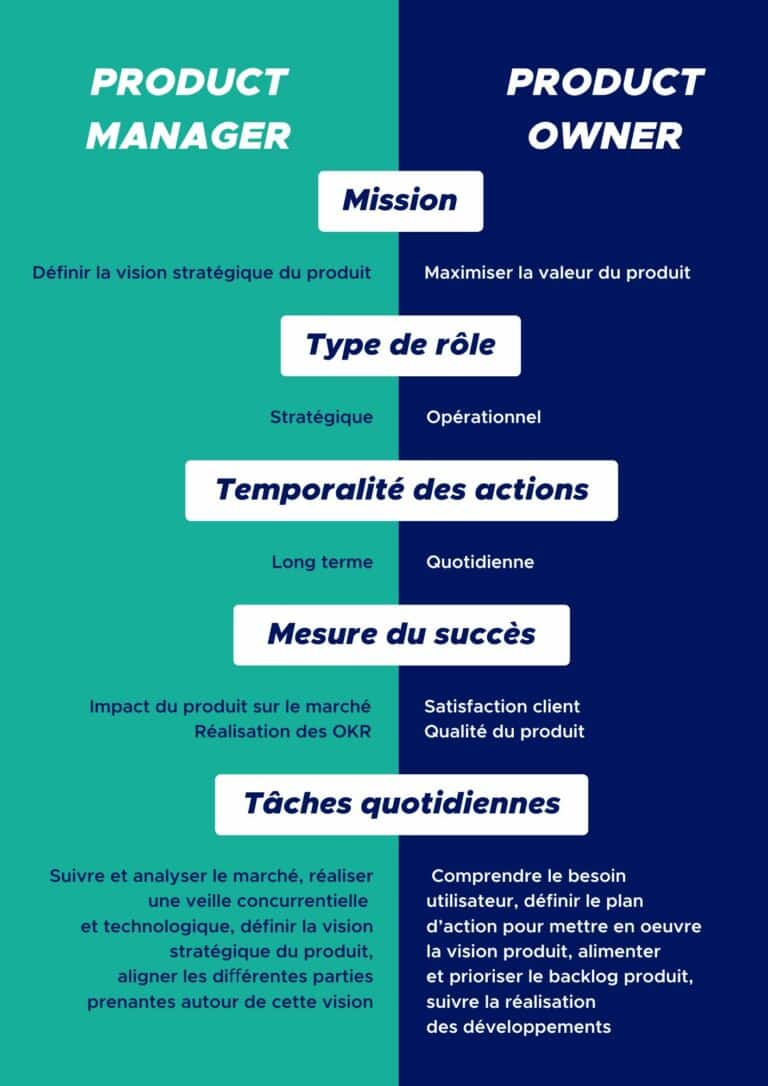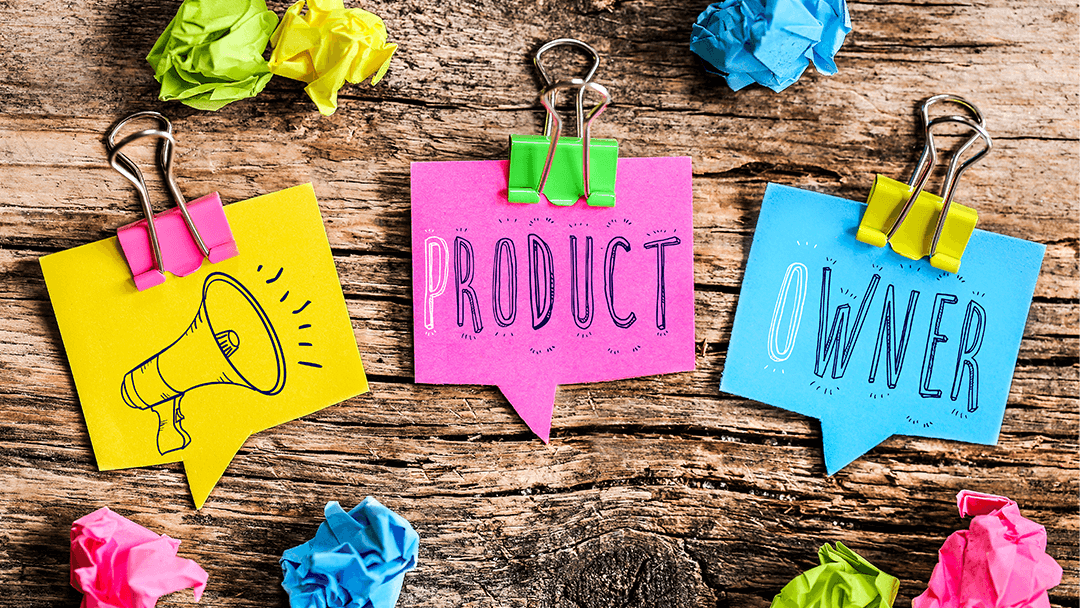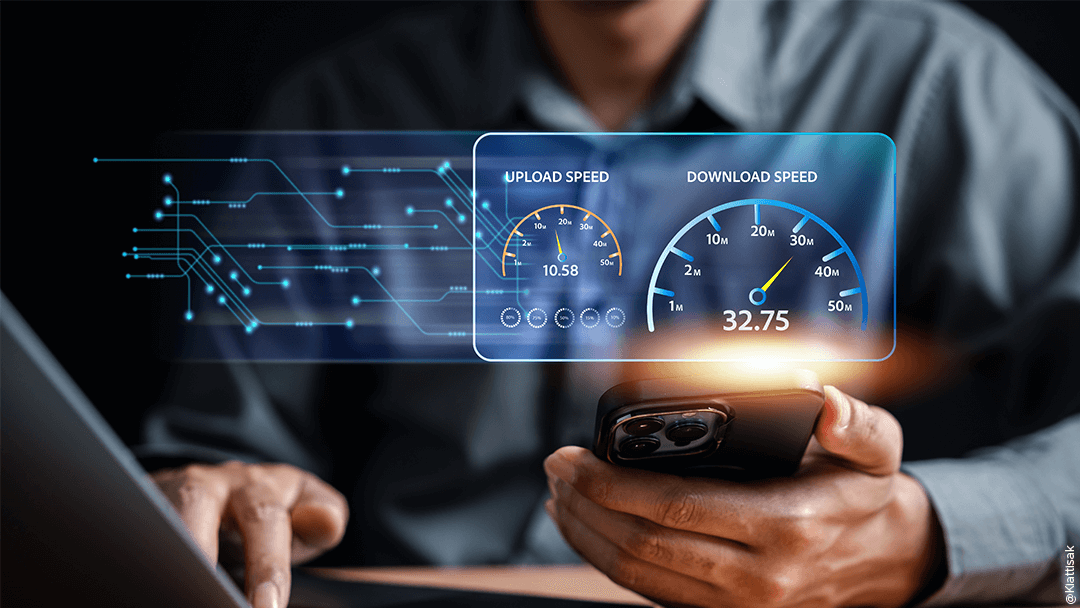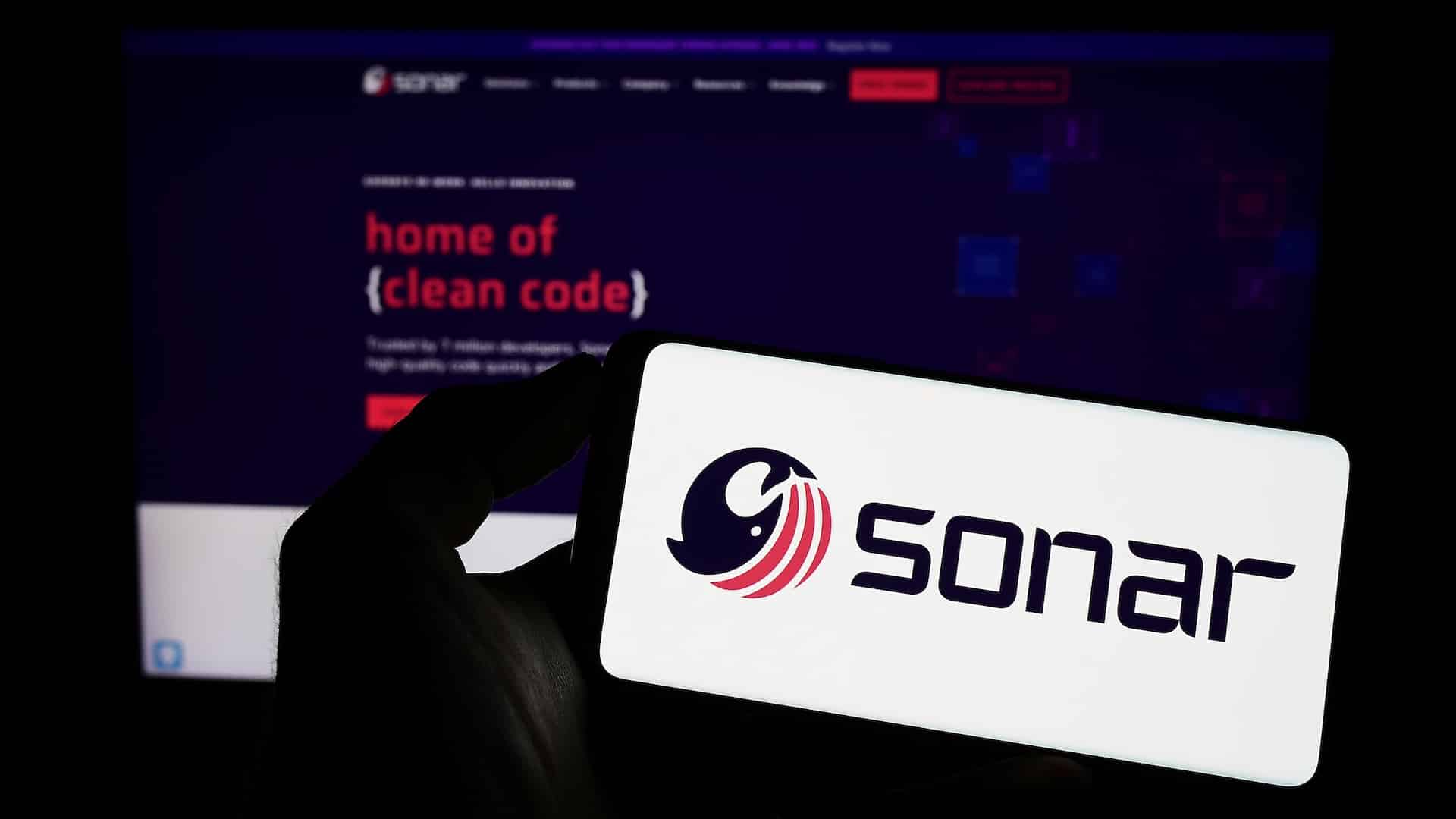The product owner is an expert in agile methodology, guaranteeing the success of the product and the value it brings. Discover this profession from A to Z.
What is a Product Owner?
The Product Owner is one of the roles that make up the Scrum team when a team is working according to the Agile methodology. According to the Scrum Guide, the Product Owner is a “Value Maximizer”: his mission is to add value to a product so that it meets the needs of end-users. His role is operational: he is mainly involved in the product Design and Delivery phases, making the link between the needs expressed by users and the way in which the development team can meet them.
What's the difference between a Product Manager and a Product Owner?
Unlike the Product Owner, the Product Manager has a strategic role: his mission is to define the long-term vision of a product so that it responds to market opportunities. It is involved in all phases of a product’s life cycle: Discovery, Design, Delivery, Launch & Growth. Unlike the Product Owner, who is more in the day-to-day business and works closely with the development team, the Product Manager is in it for the long haul and works with the marketing or sales teams. In addition, the Product Manager and Product Owner work in close collaboration: the Product Manager defines the “What” and the Product Owner the “How”.
However, in some companies, the roles of Product Owner and Product Manager are performed by the same person. This is particularly the case when the product evolves in an environment that is not too complex.

What is the role of a PO?
The Product Owner’s role is to ensure that product evolutions meet end-users’ expectations. It must understand the needs of its users and define the most appropriate solution to meet them. It translates this solution into specifications for the development team, and ensures that all developments remain aligned with the defined solution. It is also responsible for communicating the status of the product with all the players involved.
So what are these actions?
Understanding end users
The Product Owner must understand the needs of end-users to be able to meet their expectations. To achieve this, he organizes workshops with users or their representatives (who must have in-depth knowledge of the needs and problems encountered by product users), collects their feedback using surveys, and uses analytics tools to study their online behavior. He must be able to analyze and understand the needs and problems encountered by his users.
Define the Product Goal
The Product Owner is responsible for the day-to-day implementation of the Product Goal vision defined by the Product Manager, and for communicating it to the development team. This Product Goal keeps the team aligned on a common vision for the product’s evolution.
Feed and prioritize the product backlog
Once the user’s needs and expectations are understood, the Product Owner defines the most appropriate solution to meet them. It feeds the product backlog, a sort of “To-do list” for the development team, which contains all the user stories to be realized in order to make the product evolve. To do this, it uses users’ expectations to determine which functionality will bring them maximum value. These user stories are then broken down into smaller elements, called tasks, to be managed by the development team.
Writing user stories
The Product Owner is responsible for writing the Users Stories, the elements to be realized that make up the product backlog. Each User Story must be testable and independent, so that it can be delivered as soon as it is completed. They must be clear and concise, so that the development team can carry them out independently. However, the Product Owner must be available to answer any questions the team may have, and make sure they understand the content of the User Stories.
Ensuring product quality
The Product Owner is the guarantor of product quality. He or she carries out the tests or delegates them to someone he or she trusts, in order to minimize the number of product anomalies and ensure that the product meets user needs in a simple, ergonomic way.
Transparency of product status
Transparency is one of the three pillars of the Scrum methodology. The Product Owner is responsible for communicating the status of the product backlog, upcoming targets and objectives with the various stakeholders. This enables him to obtain feedback on the state of the product and on the next developments to be implemented, and to adjust the elements of the product backlog if necessary.
How do I become a Product Owner?
There is no specific university training to become a Product Owner, but good communication skills are necessary to be able to interact with both technical and business teams. The Product Owner must also have a good analytical mind, so as to be able to understand the needs of end-users. Product Owners generally have strategic marketing profiles or a strong digital background. But it’s quite common in the IT sector to find Product Owners with technical backgrounds.
It is generally advisable to follow a management course at a business school or a general engineering school, or to train as an IT engineer, then learn about agile methodologies. There are also digital project manager training courses that enable you to work as a Product Owner. Other digital training courses can also help you move into this role, and certain platforms such as scrum.org deliver certifications.

What does it take to become a Product Owner?
Communication
The Product Owner is the link between users, the development team and the various stakeholders. They need to facilitate communication between all these players, while ensuring transparency with regard to the status of the product. They must be able to share the product’s vision with their team, ensuring that they understand it and are fully on board with it.
An analytical mind
The Product Owner must understand the issues and expectations of end-users. It’s important to have a good analytical mind, so as to find the simplest and most effective way to respond.
Common sense
The Product Owner must also use common sense and know how to make decisions that serve the product’s vision. They need to be able to say no when the requests they receive are not aligned with this vision.
The organization
The Product Owner organizes and plans all product evolutions. His tasks are multiple, and he needs to be organized and know how to manage his priorities correctly.
Involvement
Last but not least, the Product Owner is involved: he or she constantly questions users to fully understand their needs, as well as developers to understand the issues involved in development. It’s up to him to decide between different solutions in order to implement the one with the best cost/time/value ratio for the end-user.
Of course, this list is not exhaustive, and skills in time management, adaptability, analytics, organization and decision-making are essential.
How much does a Product Owner earn?
A Product Owner’s salary depends on a number of factors: experience, training, seniority, geographical location, project complexity and company. Each Product Owner position has its own specificities, and so does its salary.
Product Owner: possible career paths
After several years’ experience, the Product Owner can progress to Product Manager, Chief Product Officer or Head of Product. Occasionally, some Product Owners choose to take on the role of Scrum Master. They also have a good base of skills for joining a start-up as co-founders.
Don’t hesitate to check out our job offers: Qim info has a large number of vac ancies as product owner for various customers.







